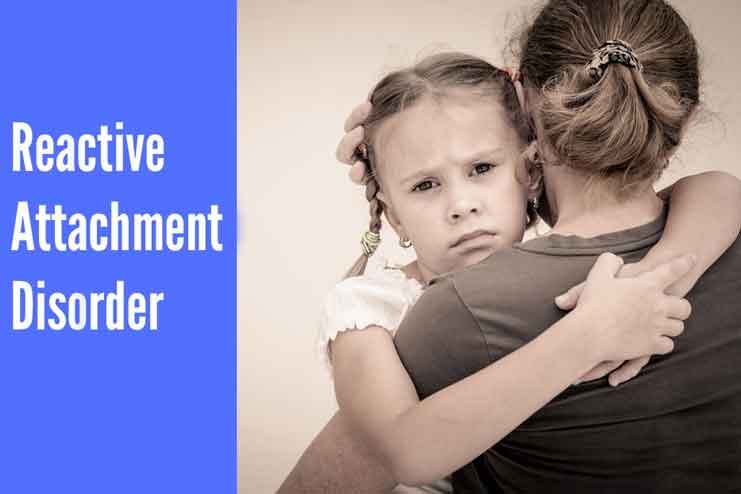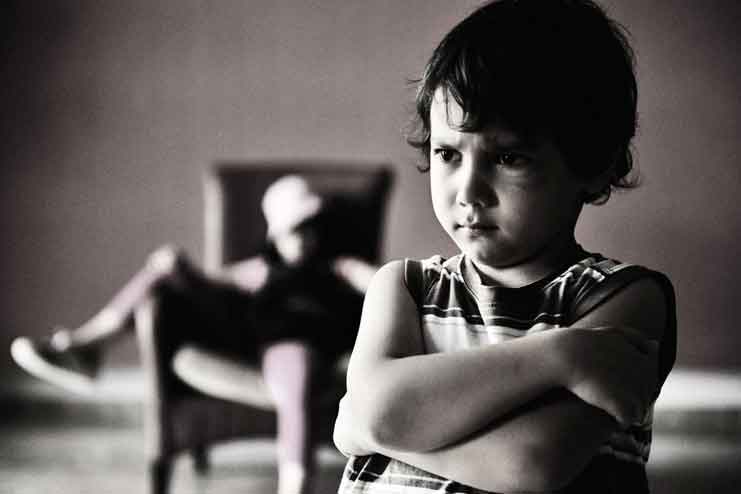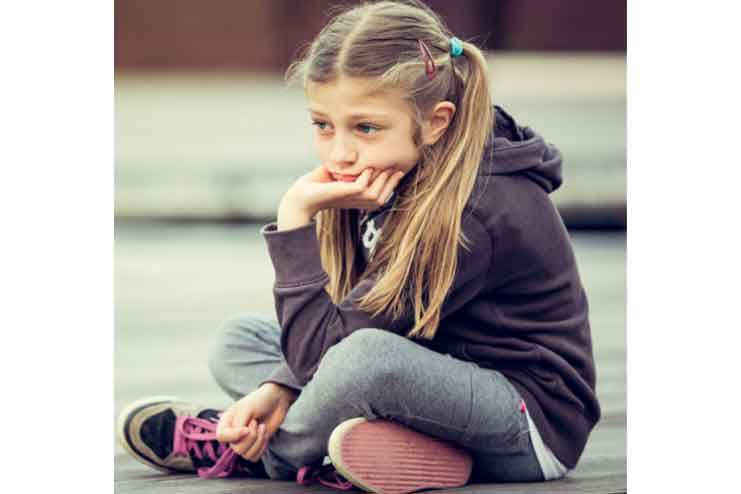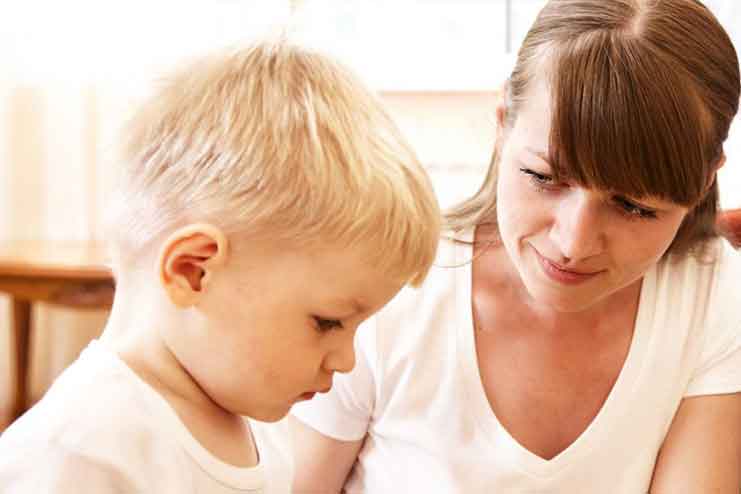Is your child has Reactive Attachment Disorder (RAD)? what are the signs & symptoms of RAD? How to discipline a child with RAD?
Attachment is the loving bond established between children and parents. It plays a prominent role in the development of a child. RAD is a condition that breaks the attachment formed by parents with their children.
This article discusses what is RAD? What are the root causes of RAD?. It presents parenting tips and strategies for reactive attachment disorder. The article suggests the 10 ways to discipline a child with RAD.
What is Reactive Attachment Disorder in Childhood?

RAD is a rare but serious condition in which the infants or children fail to form a secure and emotional attachment with their parents or caregivers. RAD children might face emotional imbalance. They find difficulty in forming meaningful connections with other people.
Attachment is a strong, long lasting loving relationship formed between the baby and the caregiver. It is an emotional connection formed by wordless communication like soothing, comforting, and caring. Attachment is the main component of social and emotional development during early childhood.
Children with RAD almost seem fearful of their parents/caregivers and rarely show signs of comfort.
RAD is most common among children between 9 months and 5 years.
What Causes Reactive Attachment Disorder in Children?
A child needs a nurturing environment and emotional contact for the proper development. The nurturing environment provides your children with the space to discover themselves and their world. Apart from the essential basic needs your child also needs emotional contact to regulate their emotions.
- RAD occurs if the attachment between children and the primary caregiver is not proper or interrupted.
- Children may be at the risk of RAD if they have received insufficient care or little emotional contact.
- Children in the orphanages are at the highest risk of RAD, where they used to spend most of their time alone.
- Abused children are prone to RAD. Children who have undergone physical harassment or sexual abuse might have experienced severe pain that creates emotional pain which does not fade easily.
Examples of the settings where children experience a lack of attachment are
a. Hostels:
Hostels are the place where parents place their children in hostels as they do not have enough time to teach them or to control their behaviour. Hostels make the children away from the love and affection of the parent’s Childhood is a stage that requires a lot of attachment from the parents and it is not the right stage to be put into hostels.
b. Changing Foster Homes Often:
Foster homes are institutions where children are kept to be provided with guardian. If the children are frequently changed their foster homes, there may be a possibility of attachment interruption with their caregiver/guardian.
c. Having Parents With Mental Disorders:
Children of parents with mental disorders experience several concerns such as lack of knowledge, support, disruptions, inefficient love, and affection. They may find difficulties in managing their emotions which makes them away from the secure attachments.
d. Having Young Parents:
Young parents lag in understanding their child’s physical and emotional needs. This throws negative shades in their child’s physical and mental health.
[Read: Effects of Daycare on Child Development and Future Behaviors]
Signs & Symptoms of Reactive Attachment Disorder:

Reactive attachment disorder adversely affects all the developmental stages of the child.
Common signs and symptoms of RAD in children include
- Resistance to touch and affection
- Disobedient and argumentative
- Aggressive behaviour
- Display inappropriate affection
As the RAD child grows older he/she may exhibit two types of behaviors namely: Inhibited and Disinhibited
1. Inhibited Behavior Type:
Some common signs and symptoms of inhibited behaviour type include
a. Feeling Separated:
Unable to connect with the other people on an emotional level. Lack of knowledge in creating and maintaining personal relationships. Avoiding people, places, and activities because of their past association with trauma.
b. Unresponsiveness:
There may be a lack of social awareness in the children when taken care of by the caregivers/strangers other than parents. This results in the limited abilities insufficient to respond to their social environment.
c. Withdrawn:
Lack of social skills make your children away from being involved in playgroups.
2. Dis Inhibited Behaviour Type:
This type of behavior is most common in children adopted from the orphanages or after returning from the foster homes where they experienced physical and emotional neglect. Signs& symptoms of this behavior type include
a. Indiscriminate Social Behaviour:
Children with this type of behaviour exhibit inconsistency in identifying and establishing attachments.
b. Violates Social Boundaries:
Social Boundaries are all about understanding and respecting our own needs and the needs of others.
c. Socially Immature:
Socially immature kids lack in paying attention to the things, difficulty in reading verbal and physical social cues, inappropriate reactions.
How Long Does Reactive Attachment Disorder Last:

Attachment develops when the child is repeatedly soothed, comforted and cared for by the caregiver/mother. A young child learns to love and trust others through the attachment with the loving and protective caregiver.
The absence of emotional attachment during the first few years of life may adversely effect a child’s entire life, if not treated properly.
How to Discipline a Child With Reactive Attachment Disorder:

Disciplining a child with RAD is challenging and requires an approach, understanding, and a lot of patience. Parents/caregivers should have the right information in helping a RAD child learn rules and behavior skills.
Here are the few effective tips for parenting a child with reactive attachment disorder.
1. Create a Safe Environment:
RAD children behave inappropriately as they are dominated by feelings of insecurity and fear. The basic elements in making them feel safe are
- Trust
- bonding/attachment
- love.
2. Spend Time With Your Child:
Stay away from the digital world and spend time with your child. Try to bond the long lasting attachment which can be attained by the quality of time that you spend.
Here are the few tips to spend time with your child effectively.
- Play with your child
- Make and eat meals with your child
- Schedule a daily activity with your child and make sure to complete it without any distractions
- Craft together with your child
- Go for a walk or get some exercise
- Read stories for your children
- Take your children to the picnic
3. Teach Your Child the Art of Happiness:
Make your child understand the art of happiness which helps them to grow into a happy adult. This will help them grow into a socially matured kid.
Here are the few parenting tips to teach your children to be happy.
a. Encourage Efforts:
Praise sincerely and honestly with a short description. Instead of praising their ability, praise their efforts. Avoid comparing with others.
Encouraging your kid’s efforts will help to improve his /her self-esteem. Self-esteem makes them happier physically and mentally.
b. Teach Social Skills:
Teach your child how to behave in the social environment.
Learn your child the following things
- Helping others
- Sharing
- Being respectful and polite
- Using good manner while eating, speaking in public spaces
- Participation
- Positive attitude
4. Protect Your Child’s Health:
Healthy lifestyles will help your child to reduce stress levels. If your child is relaxed, then it will be easier for you to discipline. Take care of your child’s diet, sleep, and physical activity.
- Diet: Make sure that your child eats whole grains, fruits, and vegetables. Avoid junk food. Include plenty of fats like- greek yogurt, avocado, cheese, fish, nuts, oatmeal, etc.
- Sleep: Lack of sleep may cause irritability and anger in your child. It may reduce the ability to cope with stress. Make sure that your child has proper sleep according to his/her age.
- Physical Activity: Physical activities help the cardiovascular fitness of your child. It helps to improve thinking abilities and concentration. Allow them to play outdoor games or some exercise in the early morning.
5. Stay Positive and Help Your Child Develop a Positive Attitude:
Children rely on feelings. If they notice that you are discouraged, it might be discouraging to them. Turn to others for reassurance, when you are feeling discouraged.
Here are the few strategies to develop a positive attitude in a child with RAD.
- Be a role model
- Let them acknowledge and accept the feeling like happiness, fear, shame, anxiety, sadness
- Surround them with positive vibes
- Encourage and motivate your kids
- Teach them morals and values through stories and games.
- Give your child freedom
6. Practise Positive Parenting:
Positive parenting is a strong attachment bond formed between the parent and the child based on communication and mutual respect.
The following are the simple strategies to adopt positive parenting
a. Listen To Your Child:
listen to your child’s thoughts, this will help to rectify and raise them.
b. Internalize Discipline in Your Child:
Parent’s main focus is to help children to internalize discipline, instead, they follow orders with the fear of punishment.
Avoid these things while disciplining your child.
- Yelling
- Lecturing
- Losing control
- Becoming emotional
c. Understand Child Development:
Understand the various areas of child development like
- Intellectual development
- Social /Emotional development
- Language development
- Moral development
- Physical development
- Sexual development
Having a better understanding of each level will help you to grow your child better
7. Let the Child Know That They are Loved and Safe:
Tell the child that even if they upset or mess up with the things /moments, your feelings for your child will never change.
8. Show Physical Affections:
Usually, a child with RAD does not like to be touched. So, do not maintain a lot of physical contact until they establish trust in you. Determine the extent of comfort level and work within that.
Here are a few gestures that show your physical affection.
- Cuddles
- Hug and kiss
- Eye-contact
- Thumbs up
- Hold hands while walking
9. Set Expectations and Boundaries:
Enforce a set of rules for your child and teach the consequences if he/she fails to follow the rules. Keep a track of their rules, expectations, and consequences for disobeying the rules. Consequences will help you to take control of your kid’s behavior.
10. Stress Management for Caregivers:
Stress management skills are very essential for caregivers. The emotional and physical demands that the caregiver’s experience may cause stress and strain which may adversely affect a child’s emotions.
Here are the few tips for the caregivers to relieve stress
- Stay connected with other people who are in a similar position
- Find time alone in order to have the ability to handle your child. Maintain hobbies like gardening, solving puzzles, maintaining aquarium, painting, drawing, etc., which helps for refreshment.
The attachment that the child develops with parents or caregivers can help to regulate negative emotions at times of tiredness, illness. It helps to build emotional balance in children which makes them understand the impact of their behaviour on others. A child with an attachment disorder is most likely to lose emotional balance. Attachment and emotional balance together will help the child to grow into a matured social being.
This article has given you 10 best tips to discipline a child with reactive attachment disorder. Never lose patience in the process of recovering your child from reactive attachment disorder. Because it is difficult to erase the child’s history of neglect and abuse.










































